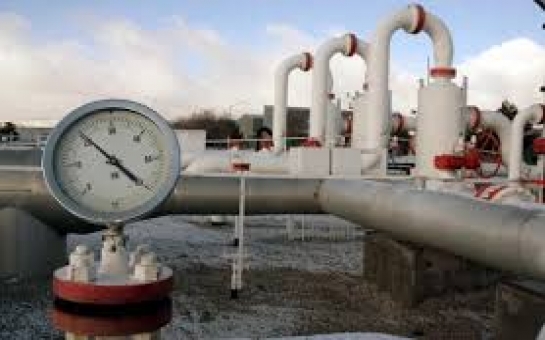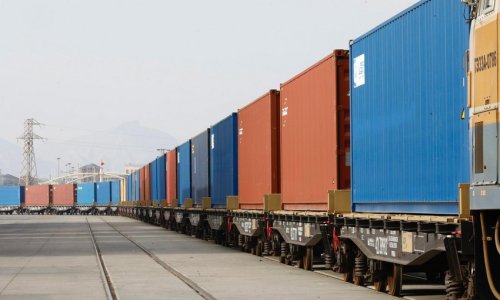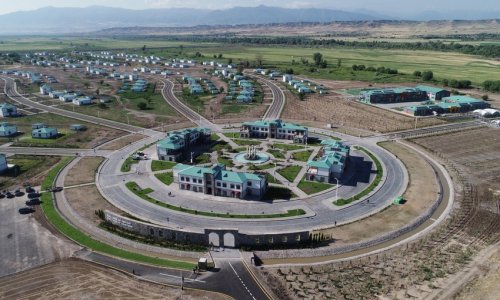(FT) - For a decade, the EU has nurtured an almost absurdly ambitious plan – to pump natural gas from the Caspian Sea thousands of miles into the heart of Europe, and so reduce its heavy reliance on gas from Russia. When that plan finally got the go-ahead in December, it felt like a bit of a damp squib.
Agreements signed in Baku, Azerbaijan’s capital, will see a BP-led consortium start work on Shah Deniz II – a $28bn natural gas project in the Azeri sector of the Caspian that has been on the drawing board for years. The gas they produce will be sent through two enormous pipelines, one called Tanap and running the length of Turkey, and the other stretching across Greece into Italy, called TAP. The whole endeavour – gasfield, pipelines and all – is expected to cost about $45bn.
Yet the amount of gas that will actually be piped into the EU is small – 10bn cubic metres per annum, which represents just 2 per cent of the 500 bcm Europe consumes every year. Gazprom, Russia’s state-controlled gas exporter, sells 15 times that amount to Europe. No wonder its managers privately joke that the Azeri gas will be “just about enough for a barbecue”.
But the project’s supporters say volumes are not everything.
“This is a big exercise in diversification, both of routes and source,” says Riccardo Puliti, head of energy and natural resources at the European Bank for Reconstruction and Development, which is planning to lend $200m to Lukoil, one of Shah Deniz II’s partners.
For Mr Puliti, the trick is to look away from Italy to the other potential markets that the Azeri gas can supply. Up till now, Europe has been dominated by huge Soviet-era pipelines running east-to-west, from the vast gasfields of Siberia to the big consuming nations such as Germany, with branches into each of the former Soviet-bloc states. The “southern energy corridor” formed by Tanap and TAP breaks that pattern by forming new supply routes that run both east-to-west and south-to-north. That is a big advantage to countries that are currently dependent on Russian gas for their energy needs.
For example, 1 bcm of the Azeri gas will be sold to Bulgaria each year under long-term contracts. Meanwhile, construction of the Ionian-Adriatic Pipeline, which will link up with TAP in Albania, will bring the gas through Montenegro and Bosnia to Croatia. That will be a particular boon for Montenegro, which so far has no connection at all to the gas network.
The other crucial aspect of the new corridor is that it could ultimately be expanded to take in more gas from other sources, not just Azerbaijan. “There are many options for incremental flows into [TAP and Tanap], for example, from other fields in Azerbaijan, as well as Turkmenistan, Cyprus and even northern Iraq,” says Leslie Palti-Guzman, a global gas analyst at the risk consultancy Eurasia Group.
Indeed, since phase two of Shah Deniz was first mooted, the supply picture has changed significantly. Huge volumes of gas have been discovered in the eastern Mediterranean and in Iraqi Kurdistan. Gas from Leviathan, a big field found off the coast of Israel in 2010, could easily end up feeding into Tanap, as could Aphrodite, in Cypriot waters, and Apsheron – another Azeri gasfield being developed by France’s Total – though it will take many years for this to happen.
The other critical aspect of the southern corridor is the nature of the gas sales contracts BP and its partners have signed with European buyers, which differ markedly from Gazprom’s. The Russian company traditionally charges its customers prices indexed to oil. Though some of the Shah Deniz contracts are also oil-linked, others are priced off European gas trading hubs.
“This means that there will be pressure on Gazprom to introduce more of an element of hub-based indexation into its contracts,” says Massimo di Odoardo, an analyst at the energy consultancy Wood Mackenzie.
Gazprom is already under pressure concerning pricing. The company has been investigated by the European Commission for allegedly abusing its market dominance in eastern Europe by overcharging customers, restricting the resale of its gas and blocking rival sources of supply. Gazprom announced in December that it would seek a compromise solution, shortly before the commission was to issue formal antitrust charges.
But despite that truce, the company is likely to continue to face requests from customers – especially in western Europe – to end oil-indexation.
Despite all the pomp that accompanied the signing of the Shah Deniz II agreements, uncertainties remain. Some experts, for instance, wonder whether Europe will even need Azerbaijan’s gas. The continent has seen a sharp fall-off in gas demand, partly due to economic weakness, and partly because cheap American coal displaced by the US shale gas boom has undercut gas in power generation.
However, most forecasts suggest that European gas demand will pick up again in the next decade and possibly earlier – just in time for Shah Deniz’s gas, which starts flowing into Europe in 2019. EU carbon taxes will force the substitution of coal with less-polluting gas, and gas-fired power is widely seen as an ideal back-up to intermittent renewables such as wind and solar. Meanwhile, declining indigenous production of gas will increase demand for imports of the fuel.
“We’re moving to a low-carbon economy, and . . . gas [from Azerbaijan] will have a big role to play in that,” says the EBRD’s Mr Puliti.
ANN.Az











